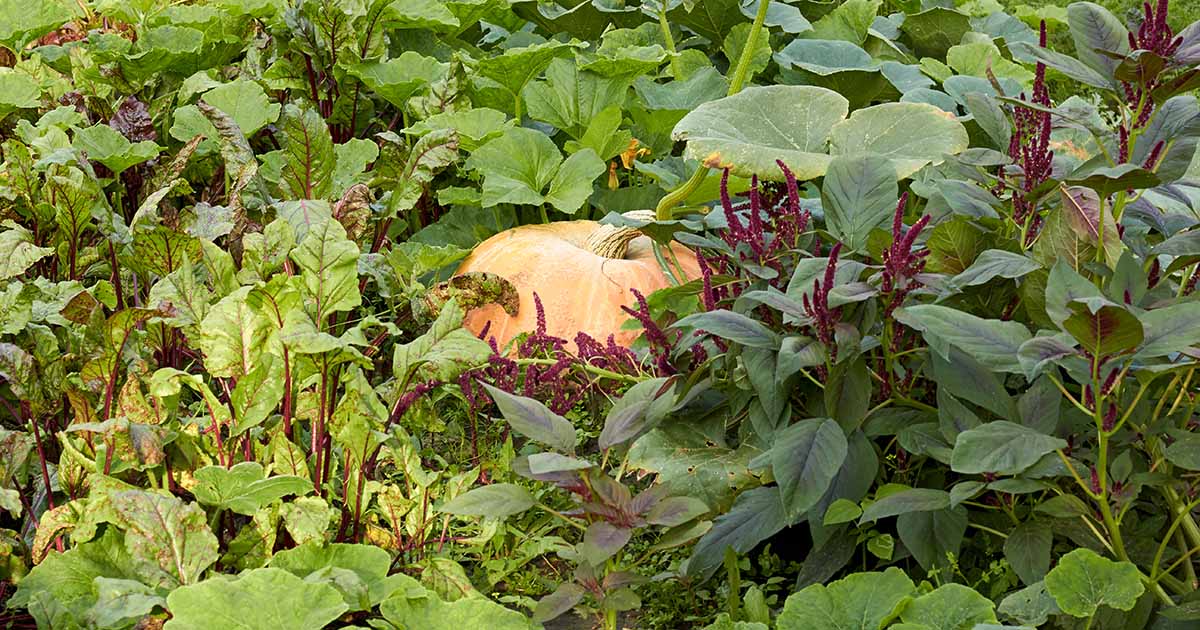Pumpkin Companion Plants
These tasty summer annuals require companions who favor similar growing conditions.
Squash thrives in USDA Hardiness Zones 3-10 as long as you keep plants warm in cold weather, and provide some protection from excessive heat.
Choose the companion plants that best suit your environment, and you’ll be good to grow.
Let’s check out some of the best companions for your gourds:
1. Corn
Along with beans and squash, corn makes up the trio of perfect companion plants known as “The Three Sisters.”


Early Native American peoples – including the Muscogee (Creek), Maya, and Haudenosaunee – planted these crops together to take advantage of their mutual benefits.
The vines will act as a groundcover and help to suppress weeds in the area around your corn. They will also help keep the moisture in the soil and prevent the roots from overheating.
The corn, in turn, provides a trellis for your pole beans, which will also fix nitrogen in the soil.
To plant the Three Sisters, sow corn first in mounds, often called hills, about three feet apart and the size of a small baseball pitcher’s mound.
Create two rows of hills, leaving two to four feet of space in between to plant your pumpkins. Space the corn seeds about four to five inches apart.
When the corn seedlings are six inches tall, you can plant pole beans around the corn. At the same time, sow your squash in the middle, in between the mounds.
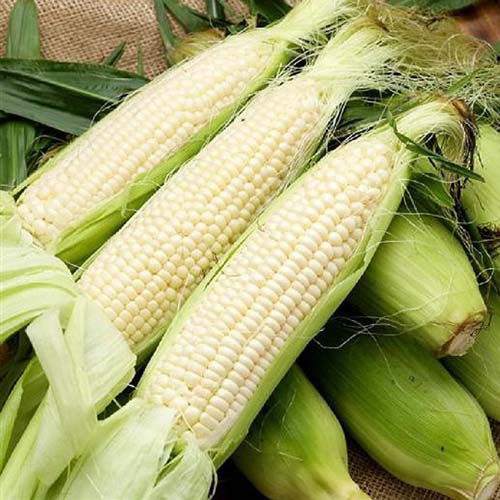

‘Stowell’s Evergreen’ Sweet Corn
The best varieties of corn to plant in the Three Sisters method are large and sturdy – try the heirloom cultivar ‘Stowell’s Evergreen,’ a sweet corn that produces eight-inch ears.
Seeds are available from Eden Brothers.
You can read more about how to grow sweet corn in your garden here.
2. Korean Licorice Mint
Korean licorice mint, Agastache rugosa, attracts several types of beneficial hoverflies.
The hoverflies will lay their eggs on the leaves, and the larvae that hatch out love to feed on aphids, mealybugs, mites, and other pumpkin pests.


With vibrant blue-purple flowers, A. rugosa makes a decorative addition when planted around the outside of your vegetable garden.
This member of the mint family is also deer-resistant and heat tolerant, for those of you in warmer climes.
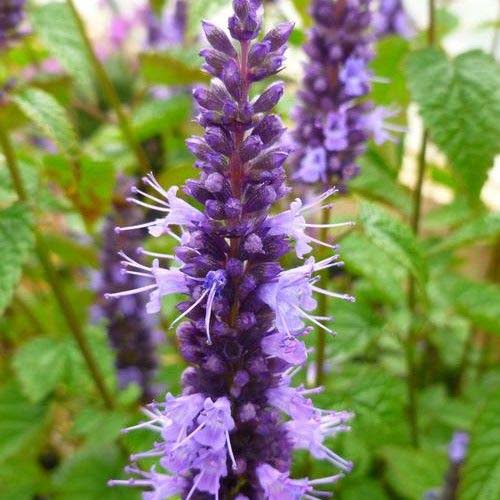

A. rugosa ‘Little Adder’
You can find A. rugosa ‘Little Adder’ plants available at Nature Hills Nursery.
Learn more about growing anise hyssop and other types of Agastache.
3. Lavender
This is my personal favorite companion plant for my pumpkins. And it’s one of my favorite herbs, hands down.


I use dried lavender seeds to fill my sleeping mask so that I can drift away to the sweet scent of lavender every night.
I plant it in my flowerbeds every year and try to keep it alive over the frigid Alaskan winter (one plant of three survived this last winter – a step up for me!).
And this winter, I’m going to grow it indoors from cuttings to enjoy those deep purple blooms and their divine scent all winter long.


This year, I also planted English lavender smack-dab in the middle of my pumpkin patch.
I’ve already seen bees bumbling around the lavender, which means they are also bumbling around my squashes. Perfection!
That’s the benefit lavender provides for pumpkins: it helps attract bees, which are an important pollinator for these plants.


‘Hidcote Promise Compact’ Lavender
Find your own ‘Hidcote Promise Compact’ lavender seeds to plant with your gourds at Eden Brothers.
Find tips on growing lavender in the garden here.
4. Marigolds
Often touted as a deterrent for a multitude of pests, the humble marigold isn’t quite as powerful as some might say.
But there is some truth to this popular piece of garden folklore.


Marigolds may repel root-knot nematodes, harmful soil-borne pests that can damage your pumpkin crops, as their roots secrete bioactive chemicals that suppress roundworms.
Planting just about any variety of marigold next to your pumpkin plants will help keep the root-knot nematodes away. Plant them among the vines, as close as you like.
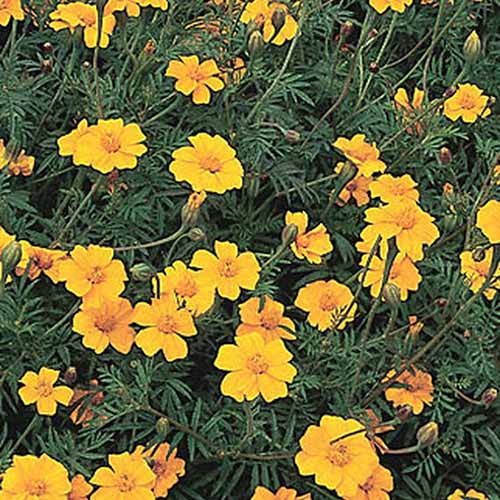

‘Nema-Gone’ Marigolds
You can plant them as a cover crop, and till them into your garden at the end of the season to help improve the soil and keep it nematode-free.
You can find seeds for a specific variety called ‘Nema-Gone’ available at Burpee.
Check out our marigold growing guide here.
5. Marjoram
Not to be confused with its close cousin, oregano, marjoram tastes sweeter, with a lightly spicy, floral scent.
Growing this in your garden means you can enjoy a bevy of tasty dishes, like this fresh tomato, egg, and goat-cheese tart from our sister site, Foodal.
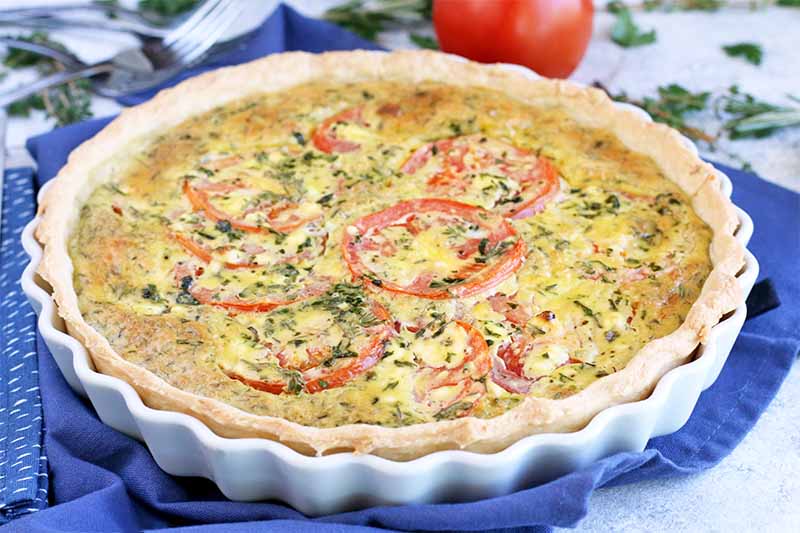

But it also can mean tastier pumpkin flesh. Garden legend has it that marjoram can improve the flavor of many veggies, pumpkins included, if the sweet herb is planted among the vines.
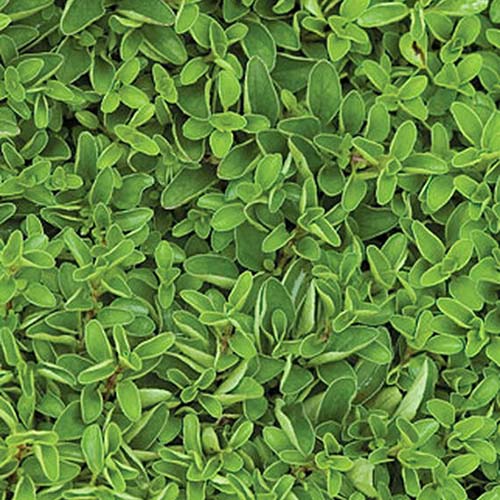

Sweet Marjoram
So not only will you enjoy fresh herbs for your cooking, but you may have more flavorful gourds as a result.
Find three marjoram plants or a packet of 2,000 seeds today at Burpee.
Learn how to plant and grow marjoram in this guide.
6. Nasturtiums
According to Louise Riotte, author of “Carrots Love Tomatoes,” available on Amazon, colorful nasturtiums help keep squash bug infestations down.


Considering that squash bugs may feed heavily on pumpkin vines and leaves, this is a definite plus.
Besides, you can toss peppery nasturtium flowers and leaves in a salad or simply enjoy the feast of color in your garden.
The plant also attracts the beneficial insects – such as ladybugs – that feed on common cucurbit pests, like cucumber beetles, aphids, and whiteflies.
In addition, they can act as a trap crop, attracting the aforementioned pests away from your pumpkins!
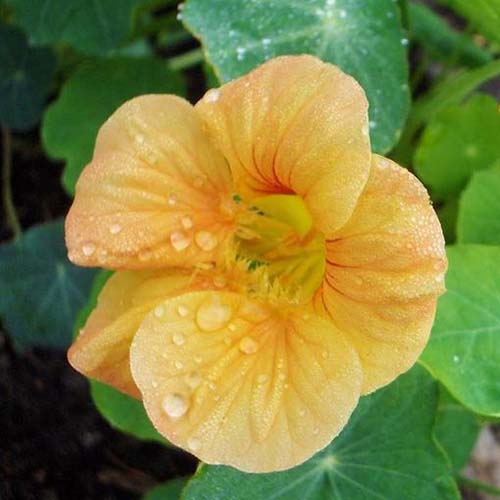

‘Dwarf Apricot’
Plant compact nasturtiums in the middle of your patch, like the ‘Dwarf Apricot,’ available from Eden Brothers.
Read more about some of our favorite varieties of nasturtiums here.
7. Pole Beans
Along with corn and pumpkins, as mentioned above, pole beans are the third sister in the “Three Sisters” companion planting method.


They benefit from the living mulch provided by squash vines and the trellis of a cornstalk, but they also add nitrogen to the soil.
Since pumpkins need nitrogen and Sister Corn absolutely guzzles it out of the soil, growing beans is helpful for next year’s crop.
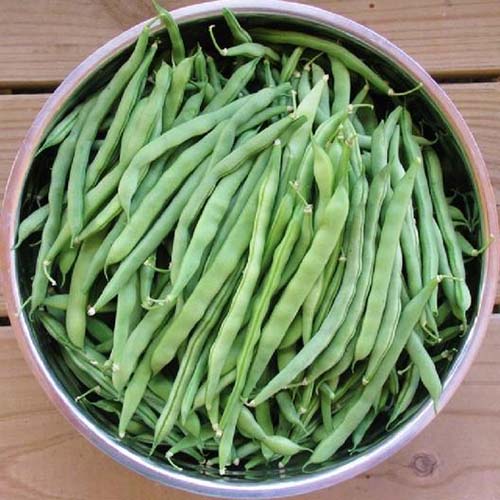

‘Blue Lake’ Pole Beans
Any legume can perform this beneficial task, but pole beans are ideal for the Three Sisters grouping because they climb up corn stalks, and save space in the garden.
You can find ‘Blue Lake’ pole bean seeds available at Eden Brothers.
Learn more about planting pole beans here.
8. Sunflowers
Often referred to as the Fourth Sister, sunflowers can attract pollinators to the pumpkin patch and help distract birds away from juicy corn kernels in a companion plant grouping.


Next year, I’m going to try my hand at growing a Four Sisters garden with pole beans, corn, pumpkins, and sunflowers.
The pole beans can climb up the stems of the corn or the sunflowers.
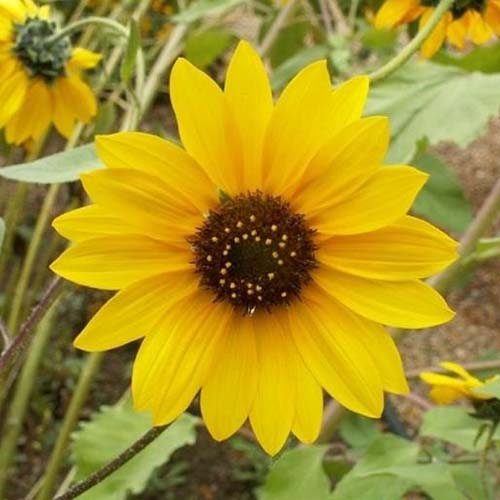

Wild Sunflower Seeds
The squash vines will provide a ground cover… It will be just gorgeous, don’t you think?
Find seeds for wild sunflowers available at Eden Brothers.
Check out our guide to growing sunflowers.
What Not to Plant with Pumpkins
Now that you know what you can plant alongside your gourds, let’s take a quick look at what not to sow near them.
First, you’ll want to avoid large root crops like potatoes, beets, and onions.



